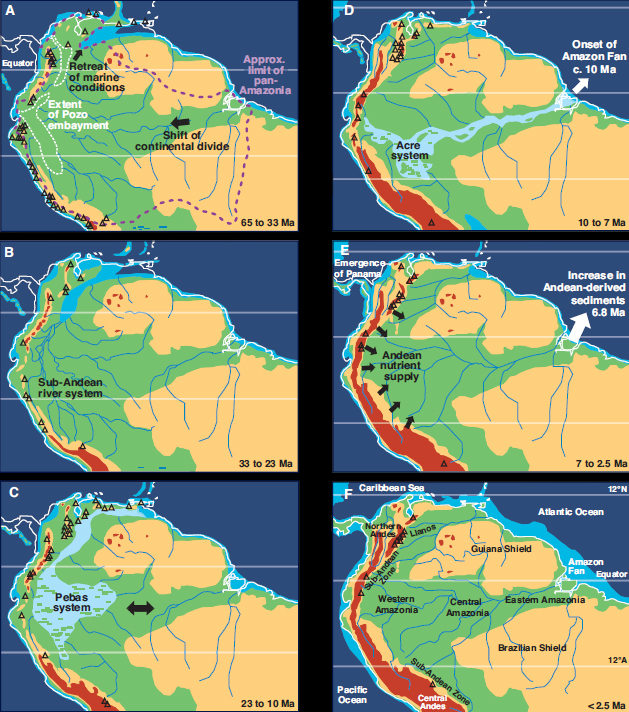“In the wake of Beagle” series brings back the adventure/science mix documentary programs reminiscent of those of Cousteau. Expeditions carried out on a ship and underwater filming was a signature in Cousteau’s filmmaking. This episode prepares the audience for the next episode filmed in the Galapagos Islands. Darwin developed his insight towards evolving species in that volcanic archipelago. Galapagos islands are largely affected by long-term seasonal fluctuations that known as El Nino/La Nina cycle. A few events Darwin witnessed in South America carried the theory to a certain level of maturity such as the earthquake in Valdivia, Chili.
The crew of Stad Amsterdam visits a few of the remaining glaciers on the southern tip of South America and reflects on the geology of Andes mountain range. Reduction in mass balance of glaciers is a worrying trend reported by glaciologists. The episode also covers problems associated with salmon farms in Chili.
The overharvesting of wild fish populations can be remedied by fish aquaculture. Salmon farms are a growing international industry. More than two thirds of Salmon on the market comes from farms. The salmon industry has a few problems. Farms established along the migration routes of wild salmon can infect juvenile fish with parasites too early in their life cycle. Excessive use of antibiotic to suppress disease among overcrowded fish farms is another problem. Fish are cold-blooded animals and this property makes them very efficient in terms of conversion of food into biomass. For this reason ecological trophic levels in aquatic systems can be much higher than terrestrial systems. Compared to fish, a warm-blooded cow is a furnace burning 90% of the food intake. Currently fish food for salmon farms comes from wild harvested fish and the pressure on fish stocks continues. There’s a potential solution for this. Insects can be a very profitable food for these farms reducing the pressure on wild fish populations:
Geology of South America especially formation of the Andes mountain range has had a huge influence on evolution of life in this continent. Darwin witnessed a strong earthquake in Valdivia of Chili. Survey instruments on board Beagle measured that the some parts of the coastline elevated 8 feet. Darwin’s understanding of geological forces changing the crust of the planet became solid.
The formation of the Andes mountain range began with the events of the Triassic when Pangaea began to break up and several rifts developed. It still continues today. During the Cretaceous Period the Andes began to take its present form, through the uplifting, faulting and folding of sedimentary and metamorphic rocks of the ancient cratons to the east of the continent. The range has many active volcanoes, which are distributed along four volcanic zones. The volcano Chimborazo in the Ecuadorean Andes is farther from Earth’s center than any other location on Earth’s surface, due to the equatorial bulge resulting from the rotation of our planet. Andes changed the entire Amazon Basin over tens of millions of years.
Paleogeographic maps of the South America shows how the continent evolved from “cratonic” to “Andean”-dominated landscapes.
(A) At the beginning there were two major cratons forming the highlands (yellow) in the east. The rivers drained into the Atlantic by flowing towards west and then curve towards north.
(B) Once Andes started to rise significantly high alpine regions (red) began to overshadow the crotons by providing nutrients to the lowlands (green) of Sub-Andean river system and the Amazon river became a south-north flowing river similar to the Nile today. The main drainage of the Sub-Andean river system shifted toward the northwest as the range grew higher.
(C) The rising mountains reduced drainage and a mega wetlant the “Pebas system” formed. Pebas system extended towards the drainage began to overflow into east.
(D) As Andes continue to rise the entire Amazon basin becomes compressed into Acre system as a wide flowing river. South America migrated northward between 66 to 23 million years ago.
(E) The Isthmus of Panama emerges forming a land bridge. The Acre system disappeared by alluvial sediment eroded from the Andes and terra firme rainforests expanded. Panama Isthmus facilitated Great American Biotic Interchange.
(F) Last 2.5 million years to present.
Continuing with the “on the future of species” theme, the episode shows “in situ” effects of global warming in Peru. Peru has been the location where the first signs of the cycle become noticeable especially by the fishermen who suffer first from its consequences. El Niño / La nina cycles are the most powerful single climate fluctuation on the planet and yet despite its cyclical nature we don’t yet have a reliable way of predicting it before it happens. One thing we know very well is that it starts with easterly trade winds loosing strength and the warm surface waters of the Pacific ocean starts to pile from Australasia towards the Americas. As the world gets warmer there is a concern that El Niño conditions might be more frequent.
We know what happens when El Niño develops but we don’t know what triggers it. El Niño means trouble for many people globally inducing extreme droughts, floods, fires and massive agricultural losses including corn and rice farming. On the other hand, El Niño seems to shift the jetstream to the south in North America and prevent strengthening of hurricanes over the Atlantic. Climatologists are very keen to learn about the series of events on the onset of this most dramatic weather alteration that ripples across the whole planet.
Glaciers have been immune to the effects of El Niño / la nina cycles which provided drinking water constantly regardless of yearly changing weather conditions. Melting and calving glaciers are providing strong evidence for global warming and will contribute to rising sea levels which will make huge agricultural land useless due to salination.



0 Comments
You can be the first one to leave a comment.